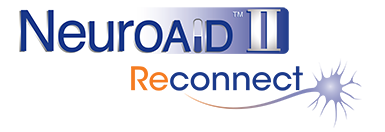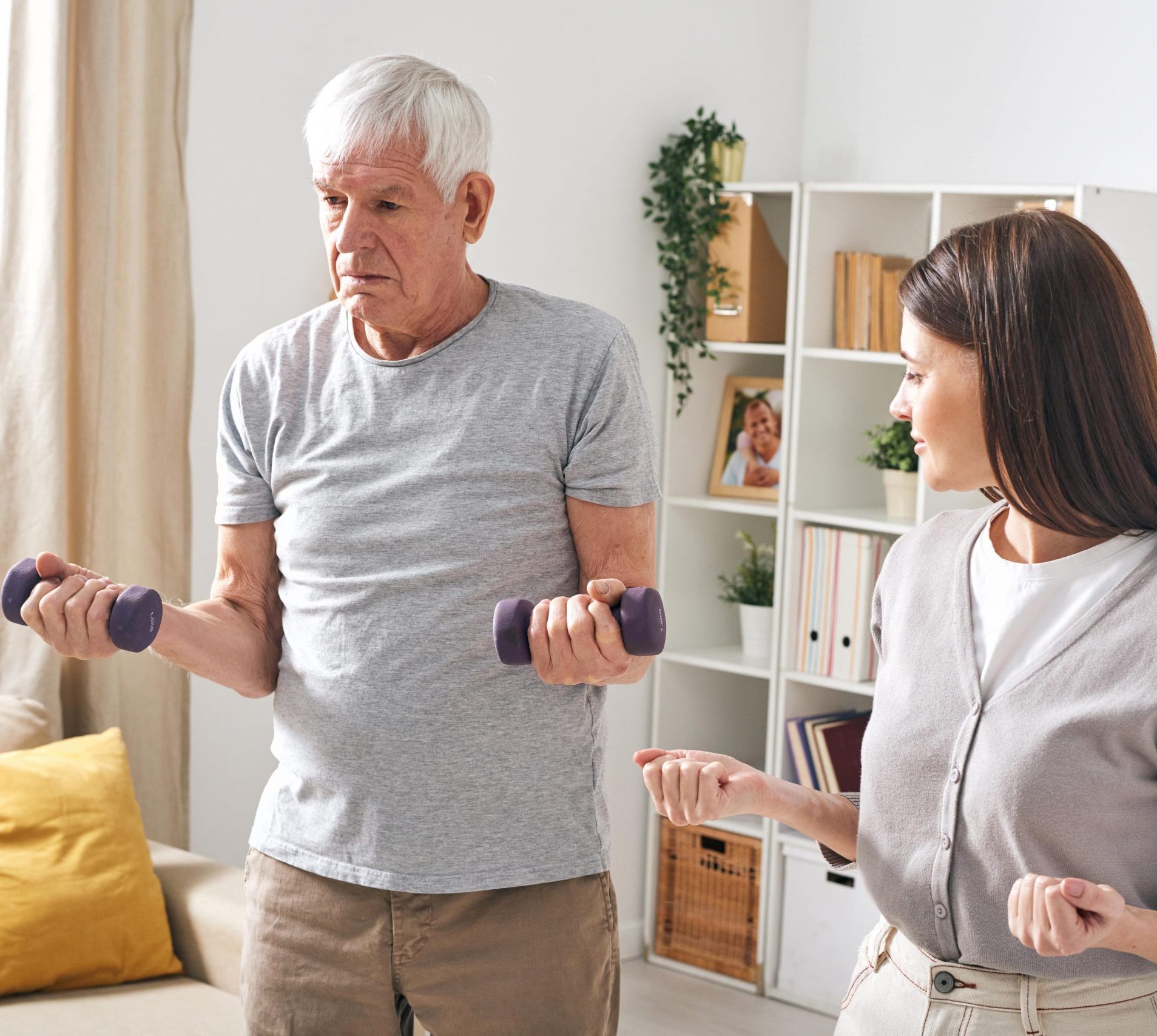In moderate or severe injury, most of the rehabilitation process is experienced in the first three months after the stroke.
The recovery continues, more slowly, until at least six months, and some patients continue to recover slightly near the year. Not all patients will fully recover.
The time a patient will require rehabilitation (physiotherapy, occupational therapy, speech therapy or other) will vary depending on the objectives of each case. Thus, in an elderly patient with severe disease, rehabilitation can focus on getting a transfer from the bed to the wheelchair easily. This can be done in a few days or weeks. However, in a young patient, occupationally active, with mild to moderate speech or mobility impairment, rehabilitation can last up to six months, or until he/she reaches his/her greater functional capacity and return to work.
These are some tips that will take you for a better and fastest rehabilitation.[/vc_column_text][/vc_column][/vc_row]
Practice exercises repetitively
One of the most important tips to speed recovery after a stroke is to practice repetition, which is repeating the exercises over and over again. This habit promotes neuroplasticity, which is the brain’s ability to recover itself after injury.
Follow a healthy diet
Eliminate all processed foods and high sugar beverages, including refined flour. Avoid alcohol and coffee. Diet after a stroke should be rich in fruits and vegetables which are great sources of potassium, so you will prevent an increase in blood pressure. It should also provide lean meats (fish, chicken, turkey, and beef). Sources of carbohydrates should be whole grains and pasta along with healthy fats, mainly monounsaturated fats (avocado, olive oil) and omega-3 fats (fatty fish, chia seeds, nuts) with low to no contribution of omega 6 fats (oils refined) and trans fats (chips, cookies, packaged foods) to prevent or reduce arterial inflammation.
Finally, a probiotic supplement can help as the health of the intestinal microbiota has been linked to brain health.
Avoid falling in the not learned use
The not learned use is a term used by therapists to describe the condition in which the non-exercise of an affected limb leads to the nullity, which means the brain “forgets” how to use that limb. That is the reason why the most affected body areas should be the most exercised.
Reduce pain and spasticity permanently
Localized pain is treated with heat packs and anesthetics, but the relief provided is temporary. Therefore, to reduce spasticity, it is better to do sustained exercise, since in this way and, through neuroplasticity, the brain recovers control over these muscles.
Sleep at least 8 hours
This is critical because during sleep the brain processes and retains all exercises you learned during the day. Sleep helps reduce fatigue, irritability, and stress.
Avoid foot's poor posture
If you have fingers curved feet or have difficulty to keep a correct posture orthotics twang foot or an Ankle Foot Orthosis (AFO) is an excellent way to correct this problem because it will help you keep your feet aligned and you will walk more easily.
In order to discard the use of the AFO, you should perform rehabilitation exercises, so you always have these muscles active.
Change your mindset
In this regard, it is important that you set goals throughout the rehabilitation process. By this way, you’re focused, can measure your progress and keep motivated.
Whenever possible, set for weekly goals and write them down on paper so you can see them daily. It will help you not give up.
Keep a positive attitude
This can make the difference between rapid and successful or slower rehabilitation. People who look on the bright side, emphasize their accomplishments and have high self-esteem are those that truly achieve their goals.
Develop self-confidence
One of the best ways to keep a good mood is to use phrases or mantras and repeat them in a daily basis. It is proved that mentioning positive affirmations can have positive effect on mood and self-confidence.
You need to repeat these statements again and again for 5 minutes a day so that finally they become a conviction and bring results.
Learn to deal with pain
Any loss generates distress and it is important to address these feelings so they do not generate negative emotions. Instead of repressing, you may agree that this pain feeling can be there and deal with it by having contact with the positive side of the situation.
It is important for you to respect those feelings and to accept the new situation to make a healthy duel.
Perform breathing exercises
Deep breaths have a relaxing effect and may even help prevent pain. It is recommended to do at least 10 breaths beginning inspiration through the nose and then, exhaling to completely remove the air through the mouth.
Perform breathing exercises
References:
Post-Stroke Rehabilitation. National Institutes of Health. National Institute of Neurological Disorders and Stroke. Available at: https://stroke.nih.gov/materials/rehabilitation.htm
Nutrition Tips for Stroke Survivors. American Heart Association. American Stroke Association. Available at: http://www.strokeassociation.org/STROKEORG/LifeAfterStroke/HealthyLivingAfterStroke/Nutrition/Nutrition-Tips-for-Stroke-Survivors_UCM_308569_SubHomePage.jsp
Recovering after a stroke. NHS. Available at: http://www.nhs.uk/Conditions/Stroke/Pages/recovery.aspx
Stroke rehabilitation: What to expect as you recover. Mayo Clinic. Available at: http://www.mayoclinic.org/stroke-rehabilitation/art-20045172
Stroke Rehabilitation. Irish Heart Foundation. Available at: http://www.stroke.ie/iopen24/stroke-rehabilitation-t-483_495_508.html
Recovering after stroke. Medline Plus. Available at: https://www.nlm.nih.gov/medlineplus/ency/article/007419.htm
Management of patients with stroke: Rehabilitation, prevention and management of complications, and discharge planning. A national clinical guideline. Available at: http://www.sign.ac.uk/pdf/sign118.pdf
Life After Stroke. Canadian Partnership for Stroke Recovery. Available at: http://www.canadianstroke.ca/en/resources/patients-and-carers/
Stroke Recovery and Rehabilitation. Richard L. Harvey, MD,Richard F. Macko, MD,Dr. Joel Stein, MD,Carolee J. Winstein, Ph.D., PT, FAPTA,Richard D. Zorowitz, MD.
Guidelines for Adult Stroke Rehabilitation and Recovery. AHA/ ASA. Available at: http://stroke.ahajournals.org/content/early/2016/05/04/STR.0000000000000098.abstract





